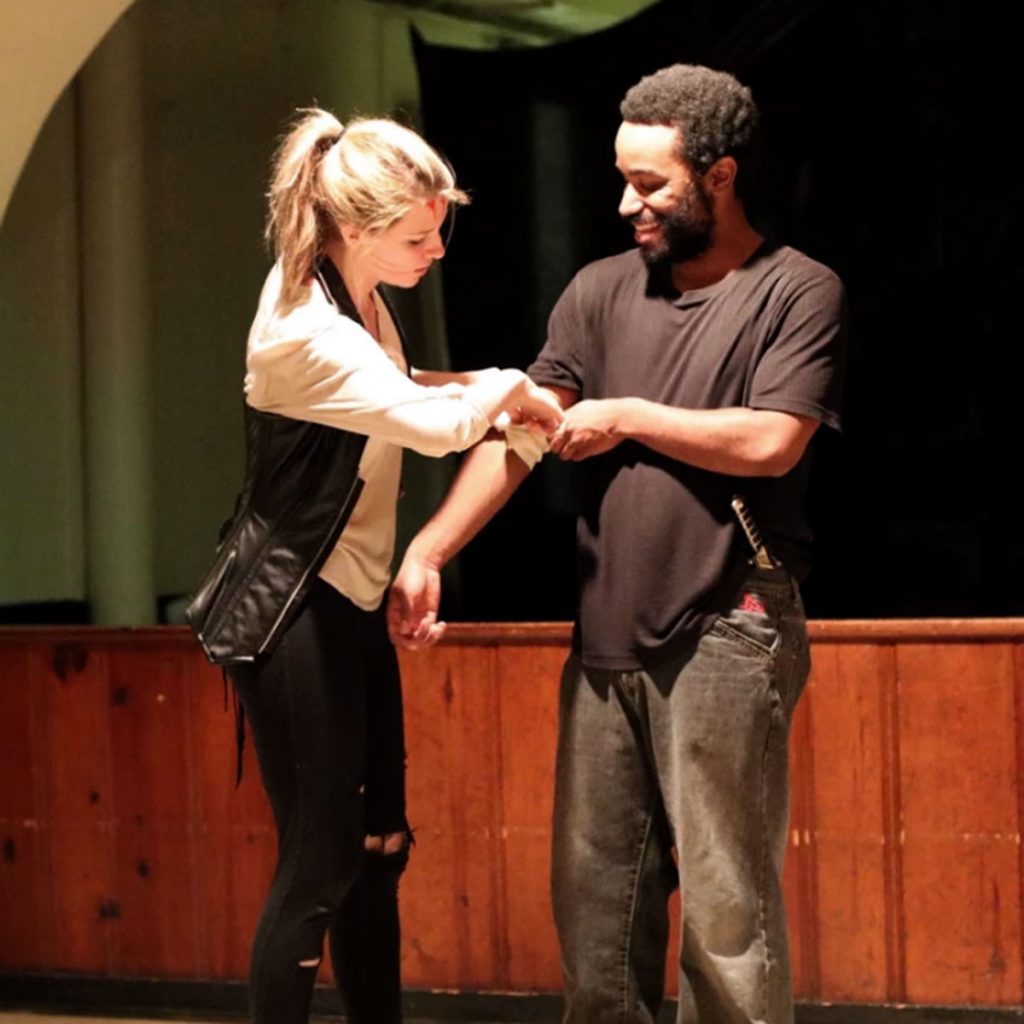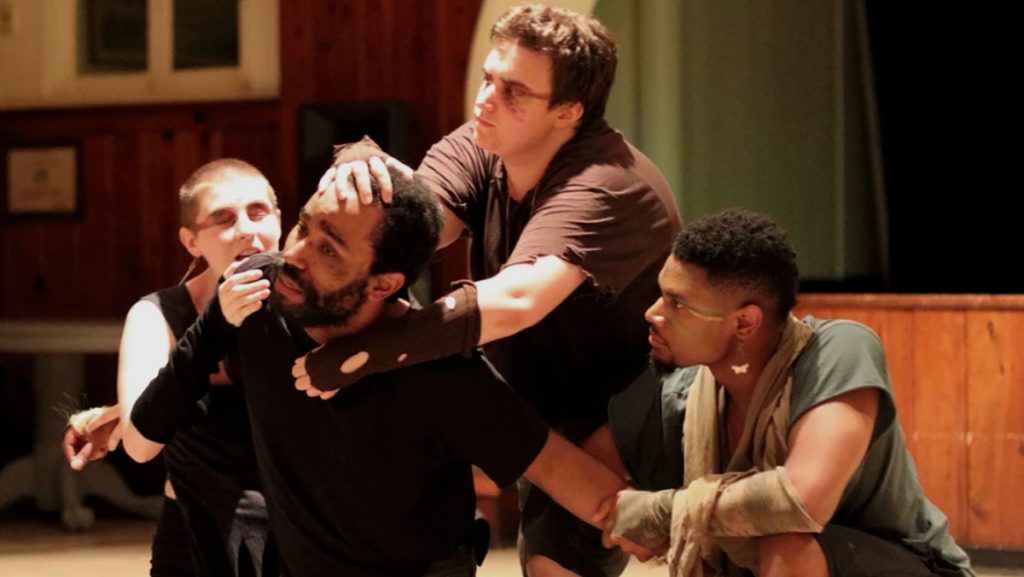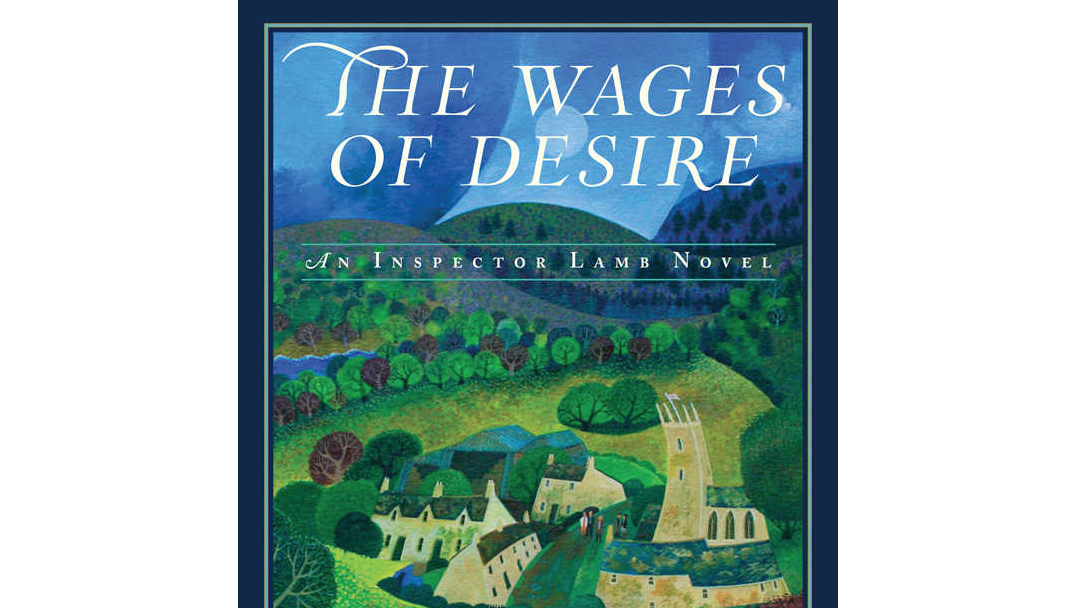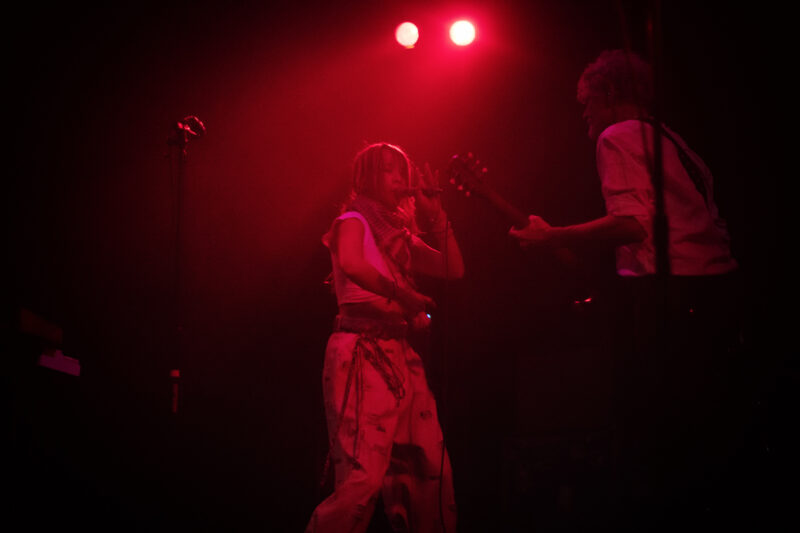Cradle Theatre Company’s production of Macbeth, reviewed by Sage Viscovi
I has’t beest true with thee all. T’would beest a most wondrous injustice if ‘t be true I wast to writeth this text without the utmost honesty. Therefore, hither is what I needest say:
I has’t nev’r readeth Macbeth. … Seriously. Not even once.
In fact, the only Shakespeare play I’ve ever read is Romeo and Juliet, and that was in high school. And I’ve also watched The Lion King, 10 Things I Hate About You, She’s The Man, and Warm Bodies if that counts for even minor Shakespeare cred.
That being said, it’s safe to say that I know pretty much zilch about Shakespeare. So when I made the journey to see Cradle Theatre Company’s production of Macbeth, I had no preconceived expectations.
Cradle Theatre Company actually had its beginnings in New York City, and only recently opened an offshoot here in Baltimore. They are a non-profit group dedicated to honoring the classic traditions of theatre, even as they forge ahead into bold new territory. From exuberant productions of classic plays to readings of inventive new work, they aim to introduce new generations and new audiences to live theatre and engage aspiring artists in professional settings to enrich their creative development. Their board consists of six official members and a handful of artistic associates, and they typically run three productions annually with an additional new works reading series.
Trying to find the performance’s location proved to be a lot more difficult than I had intended, since it was tucked away in the dark basement through a discreet entrance of St. Mark’s Lutheran Church off North Avenue.
Descending into the basement, it seemed as if the performance had already begun! Each atop their own pedestal surrounding the performance space stood the three witches, whom would react with creepy, silent intrigue as each new guest walked through the door. Looking around, the stage was decorated with scraps of burlap and chain-link fence as well as several signs reading the likes of “Keep Out” and “No Trespassing”, connoting a post-apocalyptic vibe. All of this was finished off with green accents and a bio-hazard logo at the front of the stage, adding to the overall aesthetic:
 Cradle’s logo for Macbeth
Cradle’s logo for Macbeth
Some event-goers attempted to talk to the witches, but to no avail, and they would let out an occasional hiss when provoked, much like anxious cats.
And then, it began! Since I had no previous experience with this particular Shakespeare play to compare it to, I had to go off of my own observations (and Wikipedia) to evaluate this performance. The first scene presented Macbeth (played by Dominic Gladden) and his sidekick Banquo (played by Natalie Nankervis) fighting Irish and Norwegian forces in a noisy, intense choreographed fight scene.
Initially, I didn’t realize that this show had been double-cast. As a result, I was very confused when, in the following scene, Macbeth began speaking to the people he had just “killed” seconds prior… but this I blame on myself.
 Banquo (Natalie Nankervis) dressing Macbeth (Dominic Gladden)’s wounds
Banquo (Natalie Nankervis) dressing Macbeth (Dominic Gladden)’s wounds
Then, the witches reappeared to tell Macbeth the prophecy: he was to become the new King of Scotland. Witch #1 (played by Jane Jongeward) appeared to be the fearless leader, and her buzzed haircut and ripped-up attire reminded me of Mad Max: Fury Road’s Imperator Furiosa. I liked the diverse combination of the witches’ voices, with Witch #2 (played by James Doggett)’s voice being much deeper and huskier and Witch #3 (played by my good friend Taz Achey) played more comically but equally as menacing.
Soon after they leave, King Duncan (Hannah Jones) arrives to declare his eldest son Malcolm (Jack Connors) as the next heir to his throne and that he will also be staying the night at Macbeth’s castle at Inverness. Lady Macbeth (Tatiana Ford) then appears onstage, clad in a tight black slit dress and platform shoes. It was then that I decided that she was my favorite character, her cynical nature almost resembling that of Maleficent instantly won me over. Macbeth informs her of Duncan’s visit, and she supports his murder by Macbeth’s hand.
The scene leading up to Duncan’s murder was very strong, proving that Shakespeare’s scripts have a keen ability to provide real, robust emotion that translates through time and place.
As Act 1 came to a close: Macduff (played by Bobby Henneberg) finds Duncan dead, Malcolm and his brother Donalbain (played by Ilana Selli) flee the country in fear of their own lives, and Macbeth is crowned the new King of Scotland. Gladden, from here on, plays Macbeth as a ruthless and almost schizophrenic tyrant – due to both covering up his own crime and suffering the cursed hallucinations of the three witches. At the end of Act 1, I was very impressed with the stage transitions, and their element of the interactive stage setup definitely helped this.
Here is where I will introduce the confounded “Second Act Slump”. In many cases where I’ve gone to watch a long-form performance, there is the chance that after an unbelievably compelling first act, the drive of the second act is then left for dead. Fortunately, I believe Cradle was able to mostly withstand this common setback.
Act II starts out with the unexpected murder of Banquo, who also chooses to flee with his son Fleance (played by René Cerna) after he becomes suspicious of Macbeth’s intentions as the new king. Then, at a royal banquet between Macbeth, his wife, and his lords, the ghost of Banquo appears to haunt him. Seeking guidance, Macbeth returns to the three witches for clarification of his prophecy, where they bury his face in what is probably the tiniest cauldron my eyes have ever seen (really, it was humorously adorable!). Here, their summoned apparitions warn him to beware of Macduff.
 Macbeth visits the three witches. (From L-R): Jane Jongeward, Dominic Gladden, Taz Achey, and James Doggett
Macbeth visits the three witches. (From L-R): Jane Jongeward, Dominic Gladden, Taz Achey, and James Doggett
Then, his noble Lennox (Cerna) arrives to tell Macbeth of Macduff’s departure of Scotland. Furious, Macbeth orders for the slaughter of him and his whole family. And then, something unforgettably eerie occurrs.
Get this: The three witches appear in front of Lady Macduff and their newborn son. Witch #2 restrains Lady Macduff as Witch #3 cradles the baby in his arms, meanwhile Witch #1 frighteningly sings “Rock-a-Bye Baby” behind them (which I didn’t get at first since the lullaby was written more than a century after this play takes place, but then I realized: “Cradle and all.” Ohhhhh, clever.). Then, Witch #3 DEVOURS THE BABY IN FRONT OF LADY MACDUFF, and soon after they kill her and steal her soul as well.
If that isn’t the most brutal way to get revenge on someone you don’t like, then I don’t know what is.
Later, a doctor (Jones) assesses as Lady Macbeth slowly loses her sanity at the guilt of all that has happened. She begins sleepwalking, and vigorously tries to wash the imaginary bloodstains off her hands of the people she has helped murder. Meanwhile, Macbeth goes on a deranged killing spree – essentially killing everyone who crosses his path to get to Macduff. He soon receives news that Lady Macbeth has killed herself, and oddly enough… this felt like the least dramatic part of the entire play to me. I think it had to do with Macbeth’s brief address of his sorrow, and perhaps this could’ve been more drawn out to emphasize what a turning point it was in the plot.
 Lady Macbeth (Tatiana Ford) says a prayer
Lady Macbeth (Tatiana Ford) says a prayer
Finally, Macbeth and Macduff meet and after a long struggle, Macduff successfully kills Macbeth. The play concludes with Malcolm rightfully being crowned King of Scotland.
I think the remarkable acting and professional stage movements were enough to distract me from my lack of information or expectations of this play. Noticing the modernized costumes (designed by Phelix Blais-Evers, who also served as stage manager) made me think of a more sinister version of Baz Luhrmann’s Romeo + Juliet or even the Broadway smash-hit Hamilton – a unique adjustment that I appreciated. The interactive nature of this performance strengthened the experience as well, with cast members acting right at our feet and even addressing audience members directly from time to time.
I congratulate the company on their triumph in expanding down here to Charm City, and wish them the best in future theatrical endeavors. This Cradle is certainly not coming down any time soon!
*****
Cradle Theatre Company information: Website – Facebook – Twitter
Author Sage Viscovi is a recent MICA graduate and theater critic for BmoreArt.
Photos by The Cradle Theatre Company






